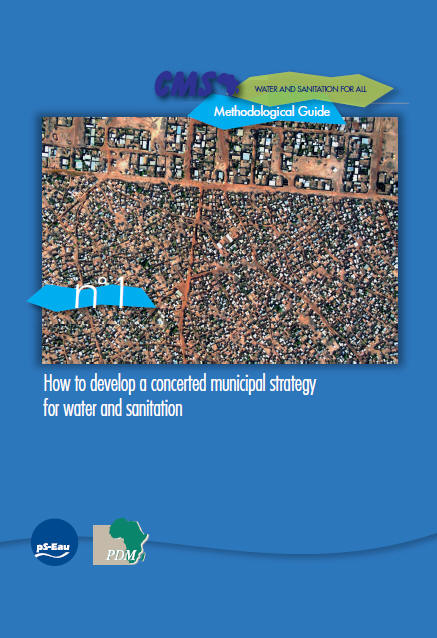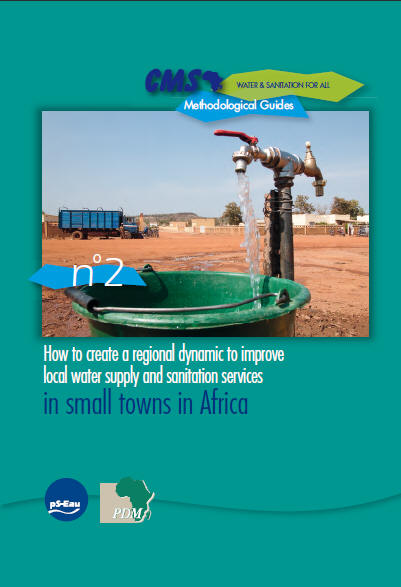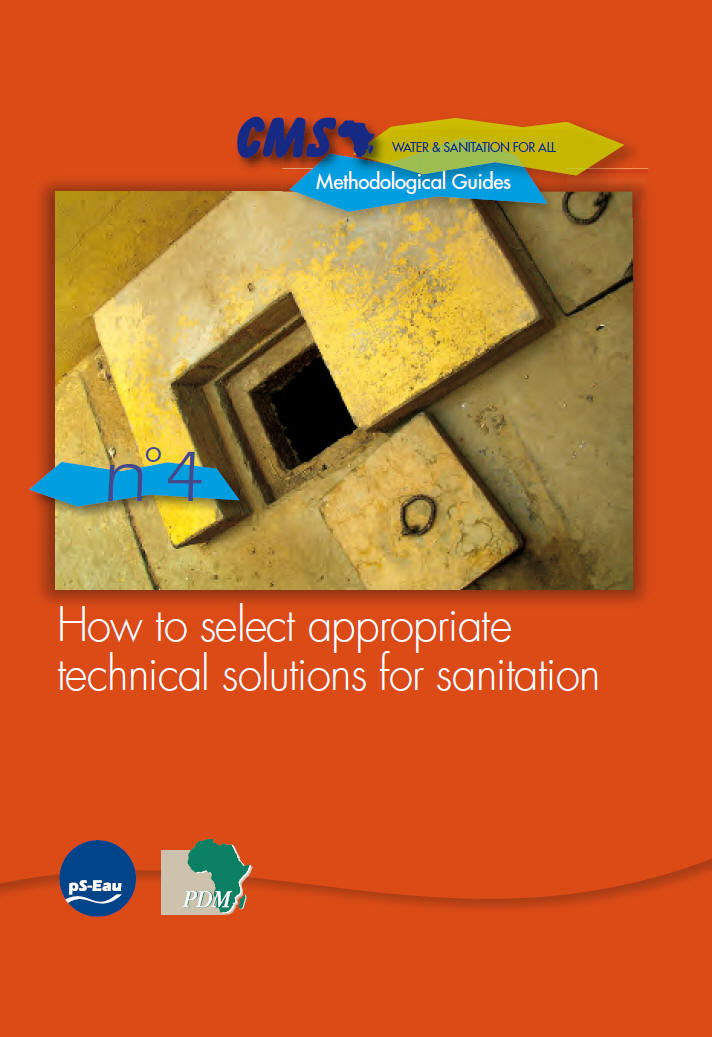Component 3: Six methodological guides
You are
- a local authority
- a national or regional water and sanitation manager
- a water and sanitation service operator
- a development partner
And you wish to develop and implement a development strategy for your water and sanitation services?
Here is a series of methodological guides to assist you.
Guide 1/ How to develop a concerted municipal strategy for water and sanitation in large towns in Africa
This guide is the result of a pilot undertaken within 15 large towns in Africa: Dschang, Ziguinchor, Koudougou, Abomey, Tahoua, Ebolowa, Rosso, Louga, Dolisie, Bandundu, Grand Bassam, Masaka, Moshi, Nyeri, Debre Birhan.
Guide 2/ How to create a regional dynamic to improve local water supply and sanitation services in small towns in Africa
Developed by Hydroconseil, Guide No2 is the result of fieldwork undertaken in the regions of Brong Ahafo in Ghana, Centre-Est in Burkina Faso and Mopti in Mali.
Guide 3/ How to analyze the demand of current and future users for water and sanitation services in towns and cities in Africa
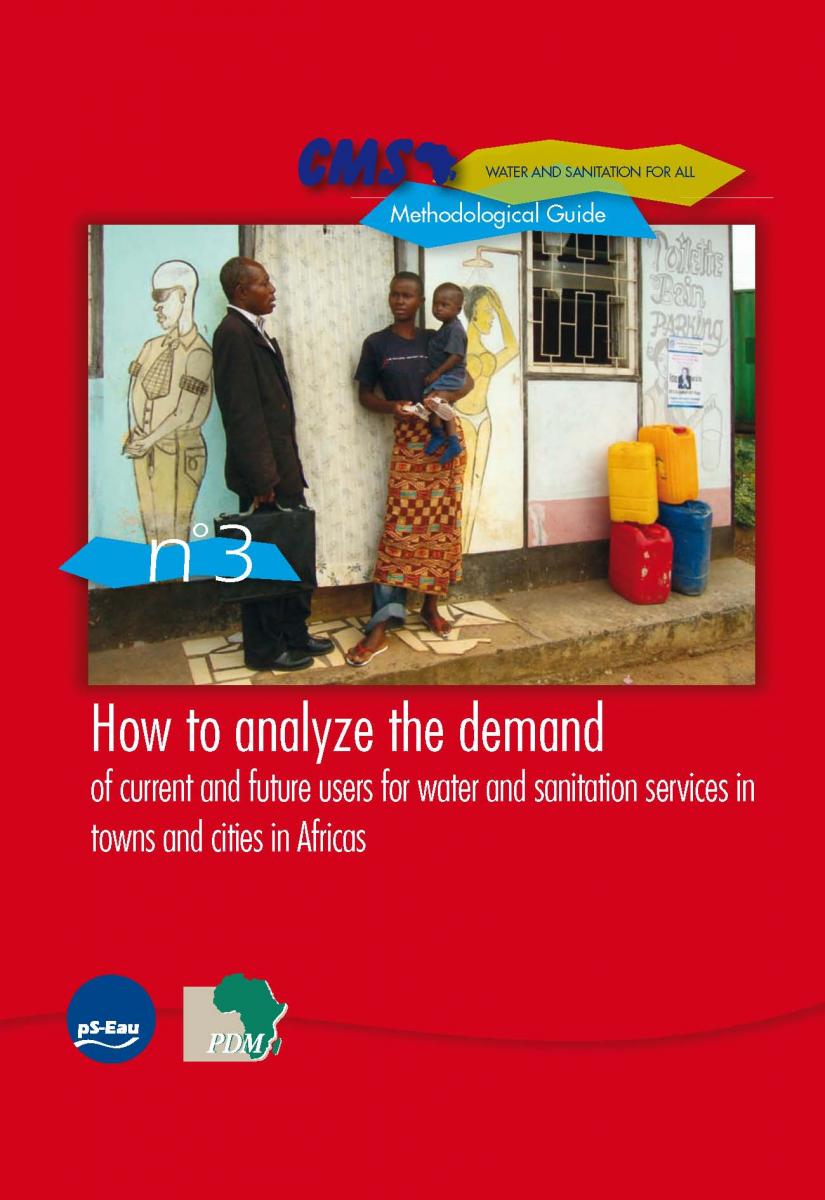 How to analyze the demand of current and future users for water and sanitation services in towns and cities in Africa
How to analyze the demand of current and future users for water and sanitation services in towns and cities in AfricaDeveloped with a view to optimizing the allocation of financial resources and to promoting equity between users of water and sanitation public services, this guide provides decision-makers and development stakeholders with the key concepts and tools of intervention required to carry out robust and usable demand analyses.
This publication was written by Gilles Roger.
Guide 4 / How to select appropriate technical solutions for sanitation
This guide was developed in conjunction with GRET.
Guide 5 / How to manage public toilets and shower
Thus, this publication sets out the different management models available for shared toilets and showers in schools, commercial public places, health centers and deprived neighborhoods. The guide reviews the principles that need to be respected and the possible options available to ensure proper and sustainable management of public toilet blocks. Whilst it does not claim to deal with or respond to all questions, this guide does provide those elements essential for ensuring local decision-makers are able to take appropriate decisions in order to provide access to hygiene and sanitation services in public places.
This guide is the result of a collaboration between pS-Eau and Urbaconsulting.
Guide 6 / How to finance sanitation in sub-saharan Africa
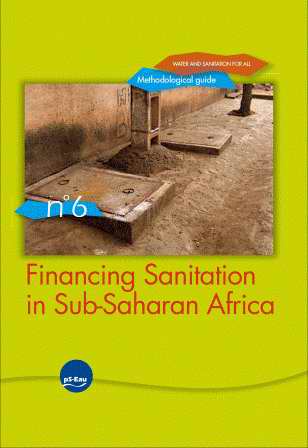 The purpose of this guide is to increase awareness and understanding of the means of financing available for the sanitation chain. The first part of this publication provides a detailed list of all costs to be recovered: investment, operation, maintenance, studies and accompanying measures, for each segment of the sanitation chain (access, evacuation and treatment). In the second part, for each segment and in accordance with the type of facility and expenditure required, the potential sources of finance are compared, as are the relevant means of mobilizing and allocating finance for the benefit of users.
The purpose of this guide is to increase awareness and understanding of the means of financing available for the sanitation chain. The first part of this publication provides a detailed list of all costs to be recovered: investment, operation, maintenance, studies and accompanying measures, for each segment of the sanitation chain (access, evacuation and treatment). In the second part, for each segment and in accordance with the type of facility and expenditure required, the potential sources of finance are compared, as are the relevant means of mobilizing and allocating finance for the benefit of users.
This guide was written by pS-Eau and Hydroconseil.
The aim of the CMS Methodological Guides series is to provide aids and tools that correspond to water and sanitation service-related issues to best meet the needs of sector stakeholders.
These guides are designed to evolve over time and be regularly updated. To assist with this process, please send any feedback or suggestions for improving this publication to the following address: le-jalle@pseau.org





































